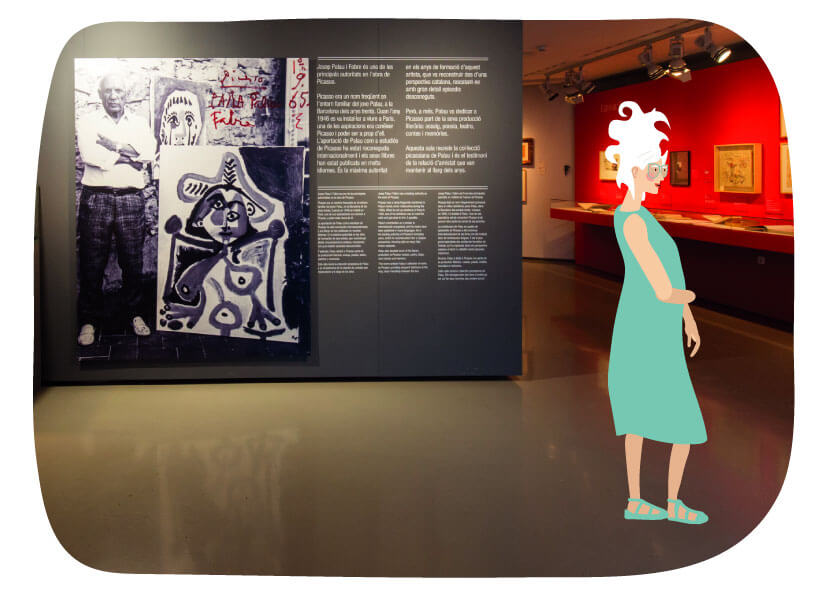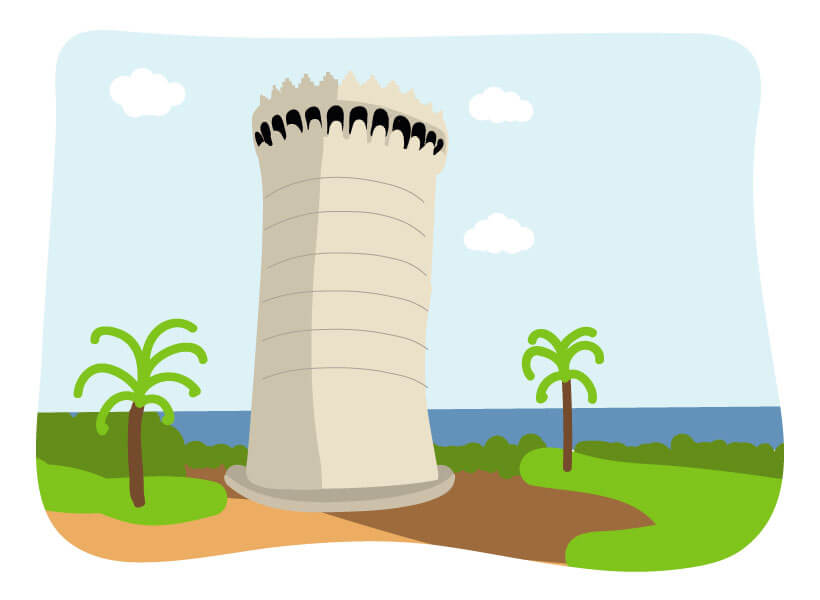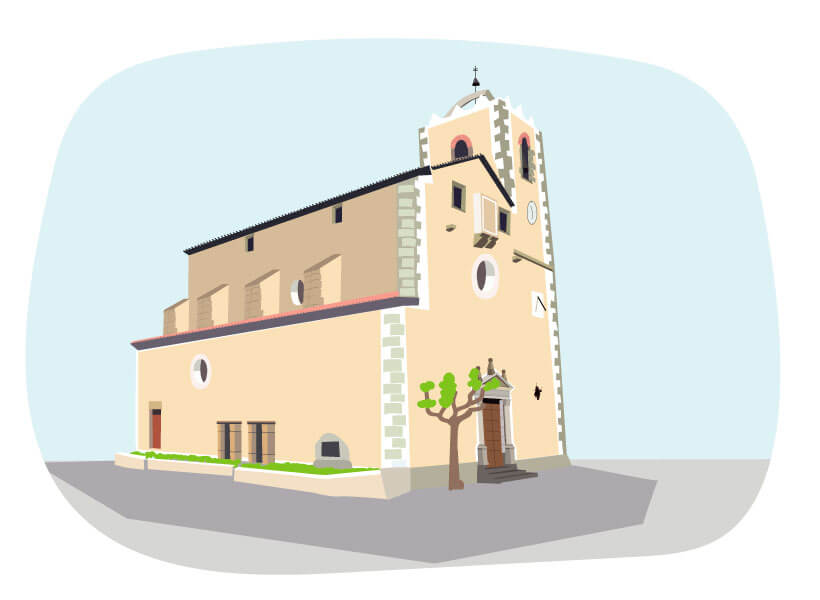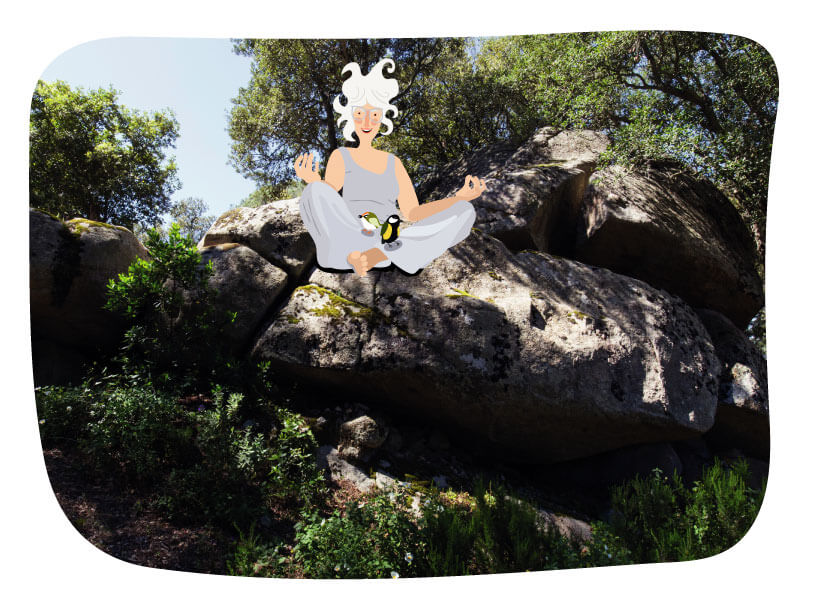Route 5: Caldes d'Estrac - Sant Vicenç de Montalt - Sant Andreu de Llavaneres

1. FUNDACIÓ PALAU
2. THERMAL SPRINGS

Visit the thermal spring. At what temperature does the water come out?

The giants of Caldes, Busquets and Fatima, are from a myth that has to do with the hot springs.

THERMAL WATERS
The history of thermalism in Caldes is directly linked to the history of the town and goes back to 1219 when, around the thermal spring, a small hospital convent was built to enjoy the curative properties of the water.
From the times of the Romans, who called it Aquae Calidae- to later in the hands of the Arabs, the waters of Caldes have attracted people from all periods and cultures for their healthy properties. No evidence has been found of the existence of the thermal baths any time before that, but one can assume it was already well known.
The closest historical reference to the thermal village we know of today dates back to 1820, when the Public Baths and Caldes d'Estrac were remodelled into a modern, highly prestigious establishment.
The inauguration of the railway, in 1848, between Barcelona and Mataró, which reached Arenys de Mar 9 years later, gave them a notable boost: according to the Local Historical Fund, 72,026 travellers used the new line in 1857. Two decades later, Caldes d'Estrac had become one of the most important summer resorts in the country.


THE LEGEND OF BUSQUETS AND FÀTIMA
Busquets and Fátima, giants of Caldes, represent two old legend characters related to the thermal waters.
Leonor was a beautiful girl from the village who was captured by the Moors and given to Prince Zeira as a gift. After some time, Leonor was entrusted with the protection of Princess Fatima, who suffered from lepra, a disease that affects skin and bones.
Wise men and doctors could not cure her and the princess got worse. Then, maid Leonor recommended her to go to the thermal baths of her beloved city of Caldes, so they moved there and lived in a tower on the outskirts of the town, known as the "Tower of the Enchanted" due to their mysterious and secret daily expeditions to the thermal baths.
The treatment was a success and, shortly after, the princess was healed and to express her gratitude she granted Leonor freedom. The princess became so happy and full of life that soon she fell in love with Busquets, a distinguished citizen of Caldes, with whom a few years later she had children.

3. PARC DELS GERMANS GABRIELISTES
4. SANT VICENÇ CHURCH

The inhabitants of Sant Vicenç are also known as "xurravins", name of a small, nervous little bird from these vineyard lands! What an honor!

It's where a Civil War bomb was removed that didn't go off. Did you find it? Then take a picture of it.
5. ROQUES DE SANT MAGÍ

The green pearl of the Maresme is cultivated in Llavaneres and neighbouring villages. Do you know what it is?

ROQUES DE SANT MAGÍ
The first excavations were carried out in 1966 by a group of scholars from the Mataró Museum. In 1986 a campaign of excavations found some fragments of undecorated ceramics with thin walls, some other ceramic fragments decorated with the printing of embossed cords and finally a fragment of flint shrapnel.
One of the characteristics of this site is the existence of wall fragments, between the large blocks of granite stone, which form a kind of wall. This feature is not very common in sites from this period
6. MUSEU ARXIU DE SANT ANDREU DE LLAVANERES

Coca de Llavaneres is a pastry certified with a seal of quality guarantee. It is the finest dessert among the Llavaneres local gastronomy.
It is made of a puff pastry filled with cream and marzipan (made with local almonds) and covered with pine nuts (also local) and topped up with sugar. Its shape is generally rectangular and not excessively thick (usually not more than 2 cm thick).
This type of cake is exclusively made by artisan bakeries located within the town of Sant Andreu de Llavaneres.
RECIPE (FUNDACIÓ ALÍCIA)
Ingredients
- 2 sheets of puff pastry
- 3 egg whites
- 20 gr ground almonds
- 500 gr of pastry cream
- Pine nuts
- Spread sugar
Preparation:
- Spread a sheet of puff pastry with the roller and flatten it very thinly.
- Place the puff sheet on a baking sheet with baking paper.
- Prick the puff pastry with a fork all over the surface.
- Put a good layer of pastry cream on top and flatten it well, trying not to reach the edges.
- Flatten the other sheet and put it on top of the pastry cream.
- Using a knife, cut off the excess sides so that it remains straight.
- Pinch on top.
- Whip the egg whites until they are stiff, adding a pinch of salt to help with the whipping.
- With a trowel distribute the prepared whites and flatten it.
- Add the almonds on top, spreading them evenly; add the pine nuts and sprinkle abundantly with sugar.
- With a knife, close the corners of the cake so that the pastry cream does not come out.
- Preheat the oven to 200 ºC and let it cook for about 30 minutes (depending on the oven).





